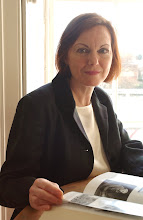
 Although Bloomsbury was one of the most cosmopolitan and tolerant communities in 19th century London, many British emigrants of this period were non-conformists who sought lives in new lands which welcomed those fleeing from religious persecution.
Although Bloomsbury was one of the most cosmopolitan and tolerant communities in 19th century London, many British emigrants of this period were non-conformists who sought lives in new lands which welcomed those fleeing from religious persecution.Helen Roberts' ancestors, Daniel Roberts (1780-1844) and his wife Harriet (nee Mills, 1785-1845), who married in Bloomsbury in 1802, were Wesleyan Methodists. The family probably worshipped at Whitefield's Chapel on the west side of Tottenham Court Road. This was established by George Whitefield (1714-1770), a well known evangelical preacher, in 1756. When Whitefield died in Boston, America, his memorial sermon at the chapel was preached by John Wesley himself. A good history of the chapel is at: http://www.british-history.ac.uk/report.aspx?compid=65173
Daniel and Harriet had three children, Mary Ann (b. 1803), Daniel (b. 1806), and Samuel (b. 1812). In 1820, the family was part of a group of Methodists who sailed for the Cape of Good Hope as settlers on board the Aurora. Daniel was a shoemaker by trade. Other people in the party were the Aldum family and William Shaw, a Methodist preacher. Helen believes that they were all lay missionary preachers. I found details of their passage on 'The British Settlers to South Africa' website. By the time they arrived at the Cape, its territory had been ceded to the British (1814) and was administered as Cape Colony. The Roberts family seems to have settled at Grahamstown, Eastern Cape, which saw a wave of colonial settlement between 1820 and 1834. You can read an account of what it would have been like to be a settler at this time on the Grahamstown website.
The photographs above show the bronze statue to the settlers of 1820 erected in Grahamstown and commemorative South African stamps.






